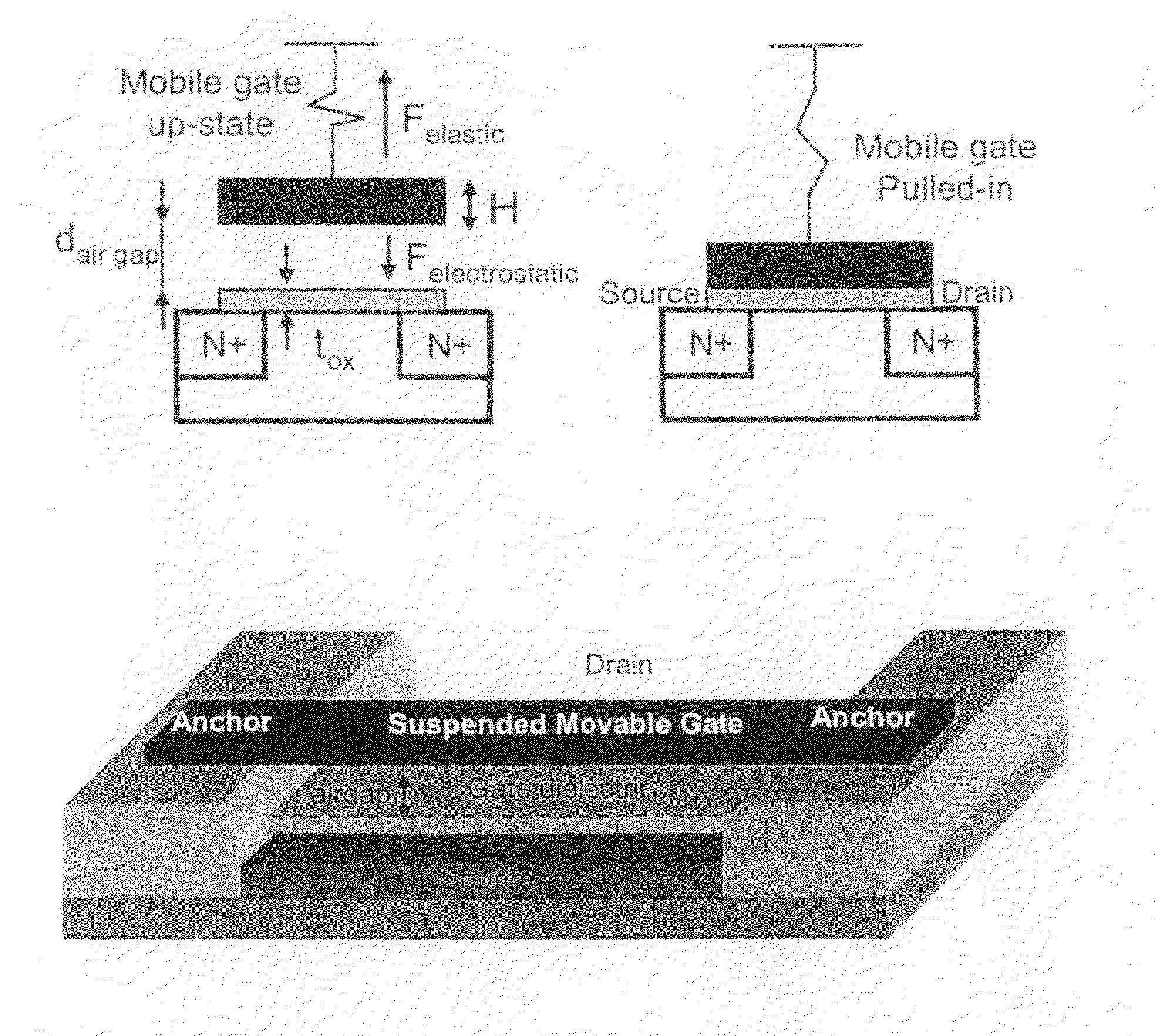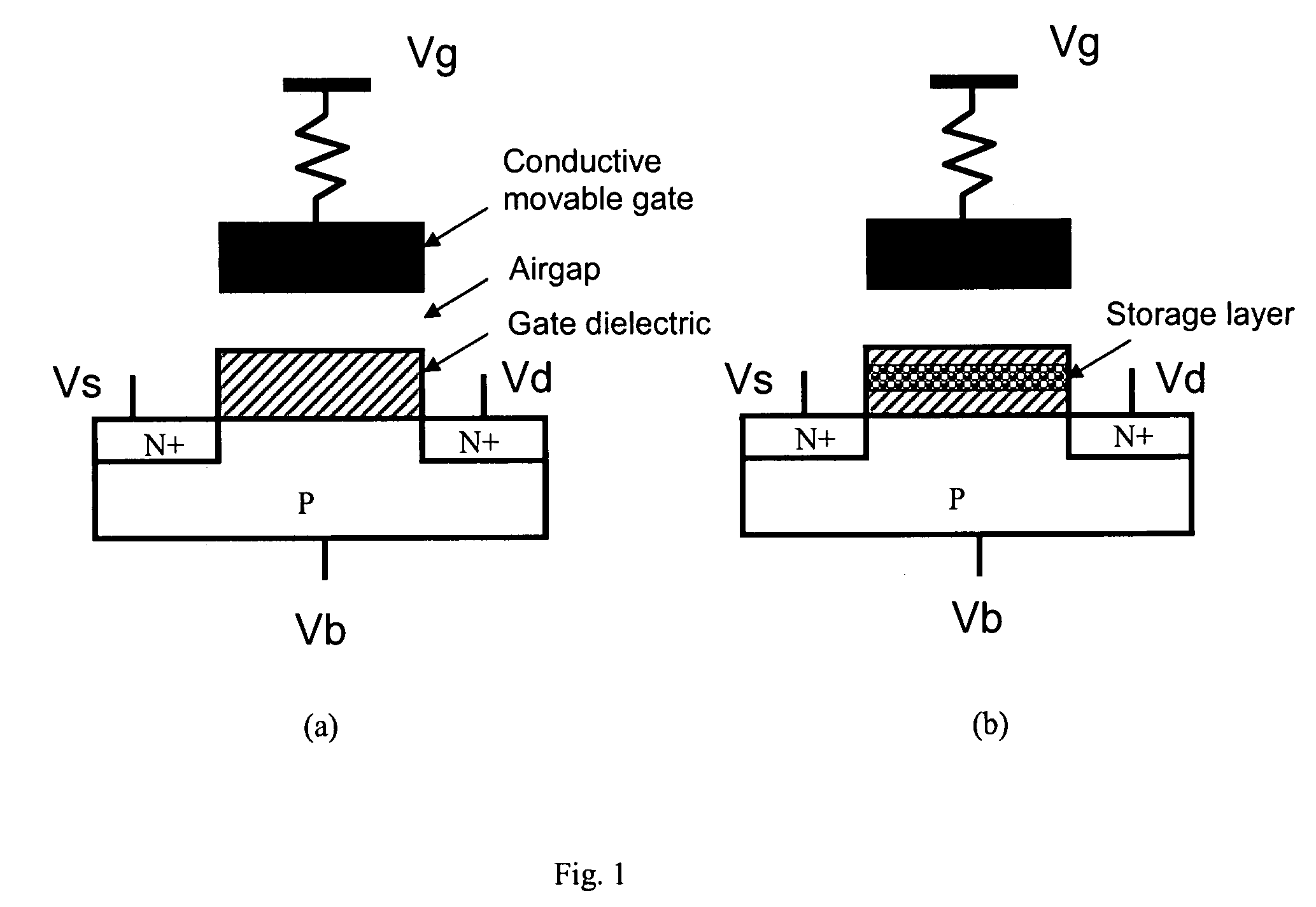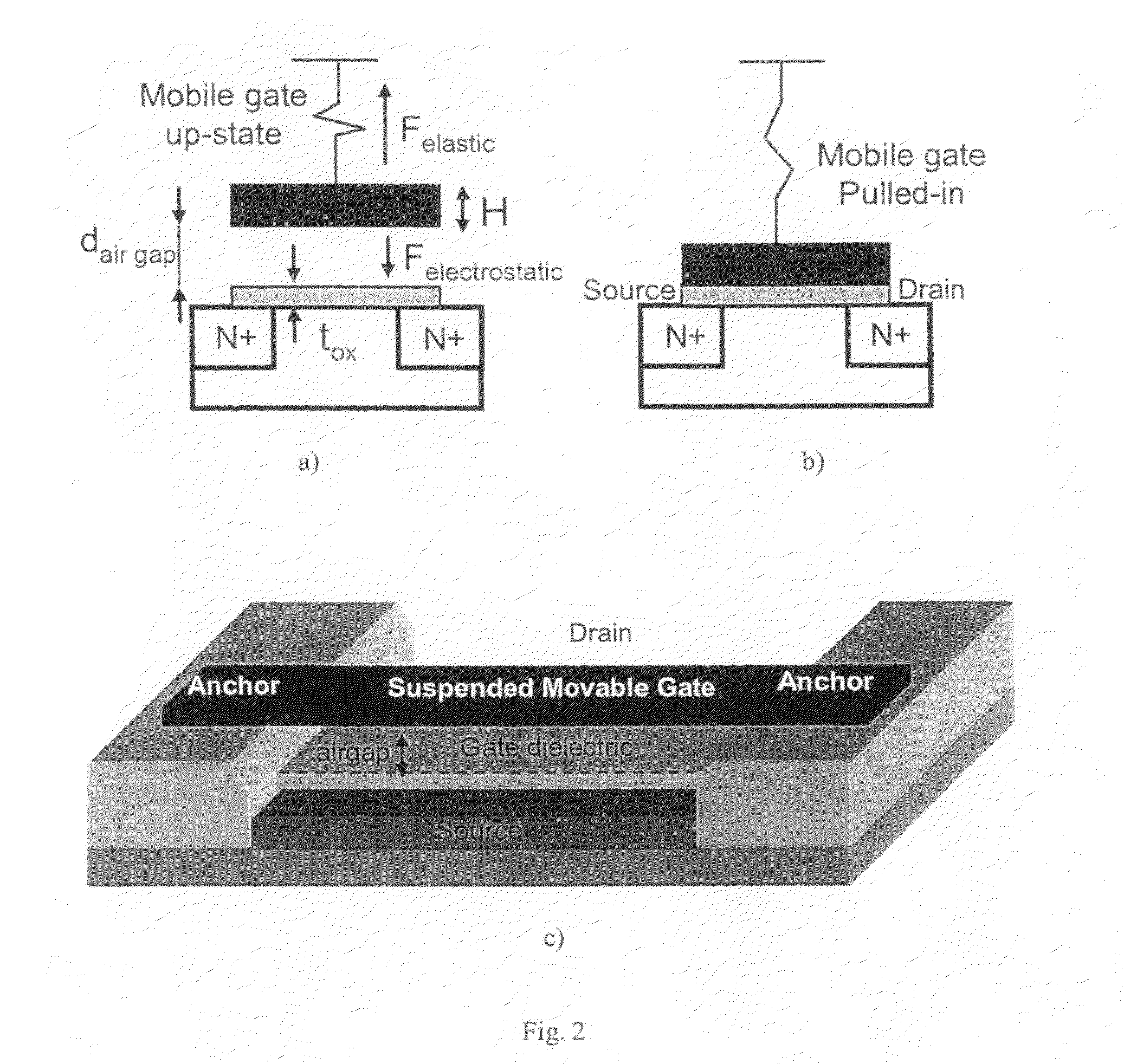1T MEMS scalable memory cell
a memory cell and scalable technology, applied in the field of integrated circuits, can solve the problems of tunnel oxide, negative impact on memory retention time, gate leakage current generation, etc., and achieve the effect of reducing the leakage through the gate and reducing the memory density
- Summary
- Abstract
- Description
- Claims
- Application Information
AI Technical Summary
Benefits of technology
Problems solved by technology
Method used
Image
Examples
Embodiment Construction
[0011]This invention proposes a new one transistor (1T) memory cell that overcomes the problem of leakage and meets high density requirements by exploiting a hybrid MEMS-MOS technology. We propose a different principle and approach for a 1T MEMS memory cell, essentially using a suspended-gate MOS transistor.
[0012]This invention proposes to use a gate dielectric placed under the mobile gate electrode of MOS transistor, without the need of the conductive floating gate mentioned by previous authors. The invention exploits the electromechanical hysteretic behavior of the mobile gate when down contacting (event called pull-in) and up separating (event called pull-out) from the gate dielectric, based on the (non)equilibrium between electrical and elastic forces. The difference between pull-in and pull-out gate voltages defines a significant memory window that can be used in volatile memory applications like SRAM and DRAM. When the gate voltage of mobile gate MOS transistor is increased, a...
PUM
 Login to View More
Login to View More Abstract
Description
Claims
Application Information
 Login to View More
Login to View More - R&D
- Intellectual Property
- Life Sciences
- Materials
- Tech Scout
- Unparalleled Data Quality
- Higher Quality Content
- 60% Fewer Hallucinations
Browse by: Latest US Patents, China's latest patents, Technical Efficacy Thesaurus, Application Domain, Technology Topic, Popular Technical Reports.
© 2025 PatSnap. All rights reserved.Legal|Privacy policy|Modern Slavery Act Transparency Statement|Sitemap|About US| Contact US: help@patsnap.com



